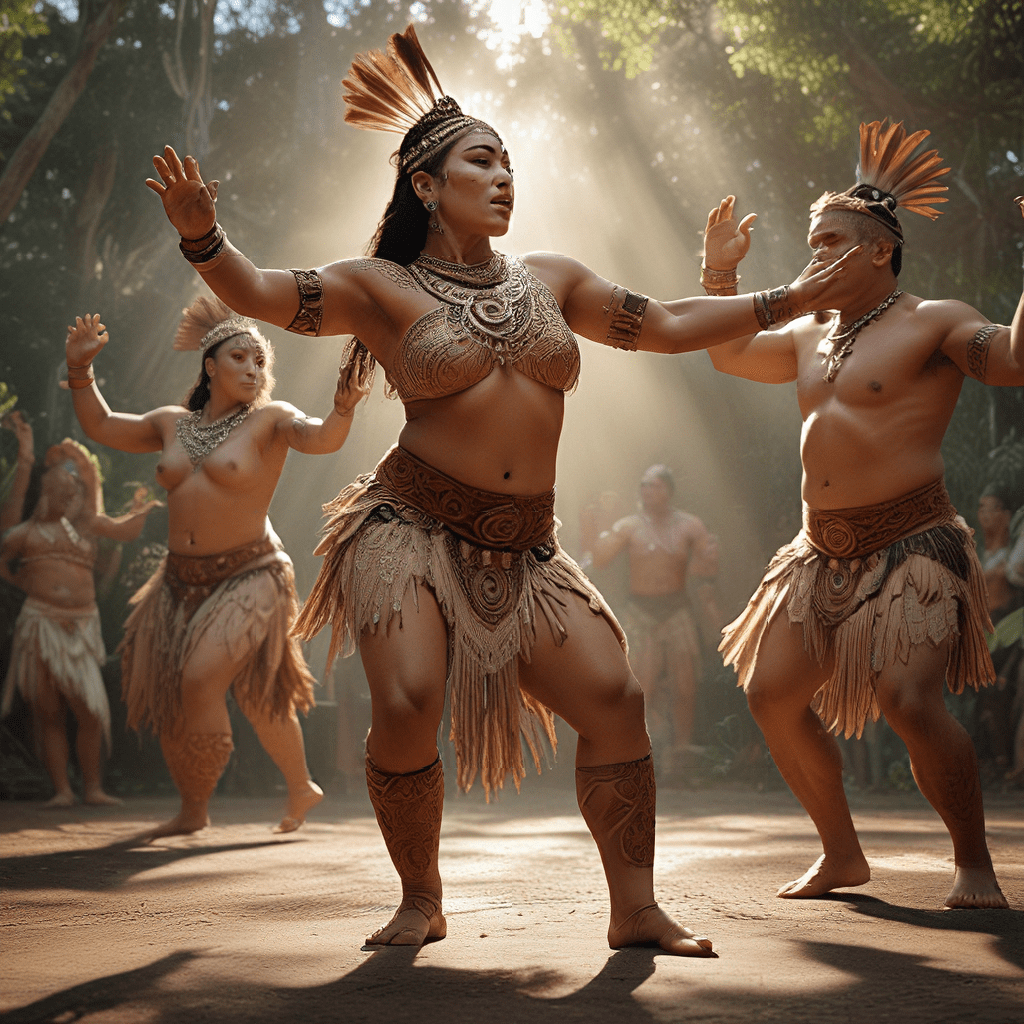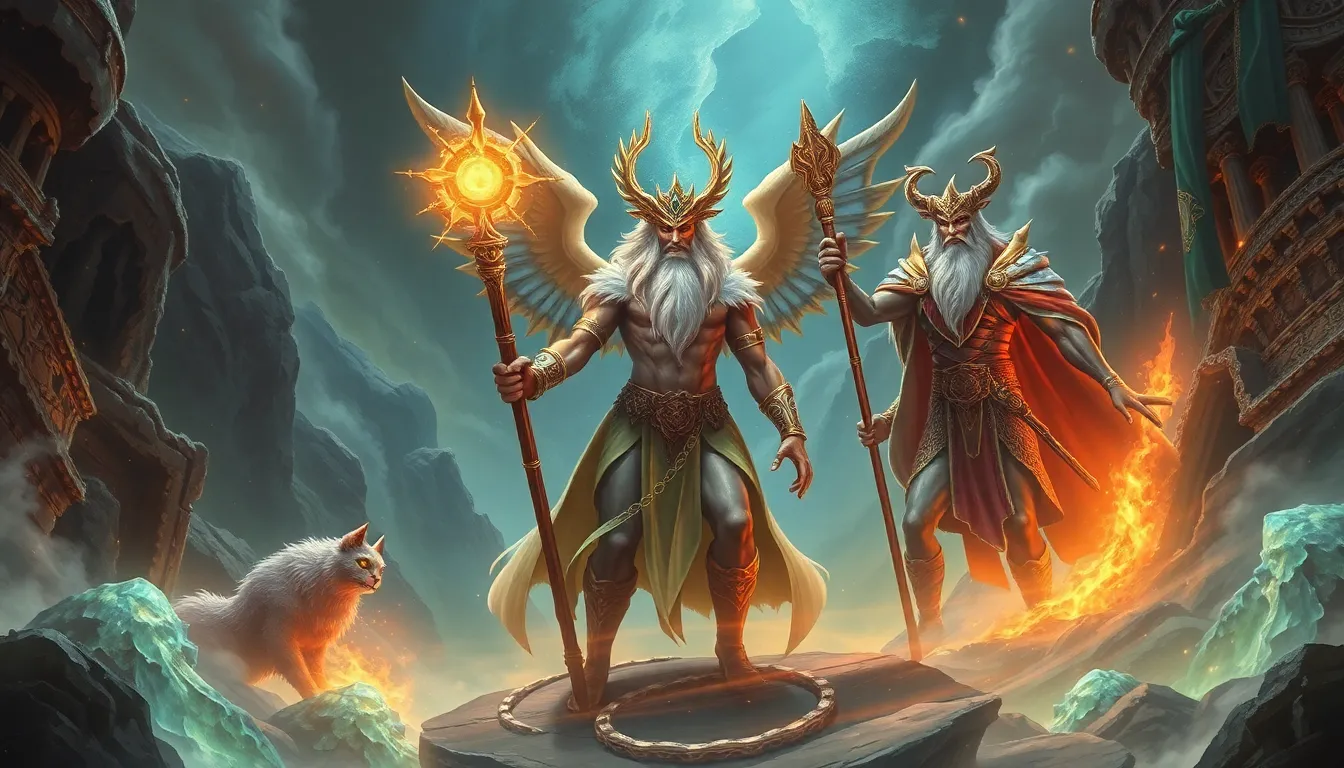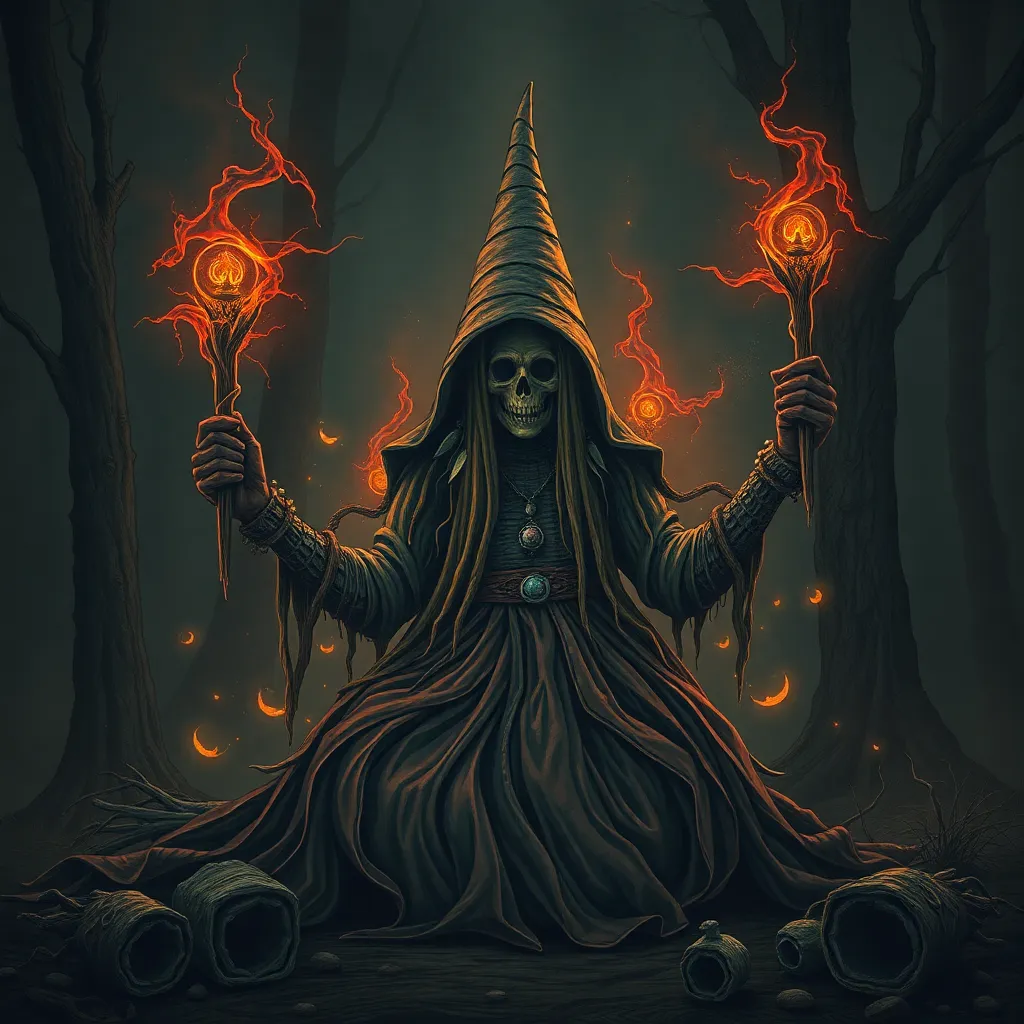Maori Cosmology and the Origins of Dance
Maori dance, or haka, is a powerful expression of the Maori people's rich cultural heritage. Rooted in ancient mythology and deeply intertwined with their spiritual beliefs, Maori dance is much more than a form of entertainment. It serves as a vehicle for storytelling, honoring ancestors, celebrating life events, and connecting with the spiritual realm.
At the heart of Maori dance lies their cosmology, a complex system of beliefs about the origins and structure of the universe. According to Maori tradition, the world was created by the gods, who shaped the land, the sky, and all living things. The gods are not simply characters in stories; they are living forces that continue to influence the world today. Maori dance embodies this connection to the spiritual realm, reflecting not only the physical world but also the unseen forces that shape it.
Key Figures and Myths in Maori Mythology
The Maori pantheon is populated by a diverse array of deities, each with their own unique role and significance. These deities, known as atua, are deeply integrated into Maori dance, appearing as figures in stories, inspiring movements, and influencing the themes explored in performances. Some of the most prominent figures in Maori mythology include:
Tane Mahuta: The god of the forest, Tane Mahuta is a powerful figure who represents the life force and the growth of nature. He is often depicted in dance through movements that mimic the graceful sway of trees and the rustling of leaves.
Rongo: The god of agriculture and harvest, Rongo is associated with abundance, prosperity, and the cycle of life. Dances honoring Rongo often feature movements that represent the planting, nurturing, and harvesting of crops, symbolizing the importance of agriculture to Maori life.
Maui: The trickster god, Maui is a legendary figure known for his cunning, courage, and resourcefulness. He is often portrayed in dance as a mischievous and playful figure, using his skills to overcome challenges and bring about positive change.
- Hine-nui-te-pō: The goddess of death, Hine-nui-te-pō is a revered figure who represents the transition from life to the afterlife. Dances honoring Hine-nui-te-pō often express grief and mourning, but also acknowledge the cyclical nature of life and death.
The Role of the Gods in Maori Performance
The gods of Maori mythology are not merely distant figures but active participants in the lives of the people. They are invoked in ceremonies, celebrated in songs, and reflected in dances. Many of the themes and movements found in Maori dance directly relate to the powers and attributes of the gods.
Tane Mahuta: The God of the Forest and the Dance of Life
Tane Mahuta, the god of the forest, is a central figure in Maori mythology and a key source of inspiration for Maori dance. His role in separating the sky from the earth and bringing forth life is celebrated in a variety of dances that depict the growth and vitality of the natural world.
One particularly powerful dance honoring Tane Mahuta is the tane tatau, which involves intricate hand movements that mimic the reaching branches of trees. This dance embodies the interconnectedness of life and the importance of preserving the natural world.
Rongo: The God of Agriculture and the Harvest Dance
The god of agriculture, Rongo, is deeply respected by the Maori people for his association with prosperity and abundance. He is honored in dances that celebrate the bounty of the earth and the cycles of planting, nurturing, and harvesting.
The hākari, a traditional feast dance, is often dedicated to Rongo. This dance features movements that represent the actions of planting seeds, tending crops, and gathering the harvest. The hākari is a vibrant and joyous celebration of Rongo's blessings, expressing gratitude for the abundance of the land.
The Importance of Ancestral Spirits (Tūpuna)
The influence of ancestral spirits, known as tūpuna, is deeply woven into the fabric of Maori dance. These spirits are believed to be the guardians and protectors of the tribe, their wisdom and power passed down through generations. Maori dance serves as a way to connect with these ancestors, honoring their memory and seeking their guidance.
The concept of whakapapa, or genealogy, is fundamental to Maori culture. It defines the lineage of each individual and connects them to their ancestors. In dance, whakapapa is often represented through intricate hand movements that trace the lineage of the performers. These gestures symbolize the continuity of life and the enduring connection between the living and the dead.
Haka performances often begin with a karakia, a prayer or invocation to the ancestors. This ritual acknowledges the presence of the tūpuna and seeks their blessing for the performance. The movements and expressions of the dancers are influenced by the ancestors, serving as a way to embody their spirit and to learn from their wisdom.
The Spirit World (Te Ao Marama) and its Influence on Dance
The spirit world, known as Te Ao Marama, plays a significant role in Maori mythology and deeply influences their dance traditions. This realm is believed to be a place of great beauty and power, where the spirits of the ancestors reside.
Maori dance often incorporates elements of the spirit world, reflecting the belief that the realm of the tūpuna is intertwined with the physical world. This connection is evident in the use of symbolism, gesture, and costume, which all serve to bridge the gap between the two worlds.
Haka performers often wear elaborate costumes and adornments that symbolize the spirit world, such as feathers, masks, and body paint. These elements represent the power and beauty of the ancestors, and help to connect the dancers with the realm of the spirits.
The Concept of Mana and its Expression in Performance
Mana is a central concept in Maori culture, signifying a powerful force that flows through everything in the universe. It represents prestige, authority, and spiritual energy, and is deeply intertwined with Maori dance. Haka performances are considered a powerful expression of mana, channeling the spiritual force of the ancestors and the community.
The movements of the haka are often characterized by strength and intensity, showcasing the mana of the performers and the community they represent. The rhythmic chanting and stomping, along with the fierce expressions, are designed to convey the power and presence of the tūpuna and to inspire awe and respect in those who witness the performance.
The Use of Symbolism and Ritual in Maori Dance
Maori dance is rich in symbolism and ritual, serving as a powerful means of communicating cultural values, beliefs, and stories. Every movement, gesture, and expression holds a deeper meaning, reflecting the complex worldview of the Maori people.
The use of symbolism in Maori dance is multifaceted, encompassing everything from the colors of the costumes to the specific movements of the performers. For example, the taniwha, a mythical water creature, is often depicted in dance through powerful and serpentine movements that represent its strength and agility.
Ritual plays a crucial role in Maori dance, serving to connect the performers with their ancestors, the spirit world, and the natural environment. The act of dancing itself is considered a sacred ritual, offering a way to honor the past, to celebrate the present, and to shape the future.
FAQ
Q: What are the benefits of learning about Maori dance?
A: Learning about Maori dance provides invaluable insights into the cultural heritage of the Maori people. It offers a deeper understanding of their mythology, beliefs, and traditions, fostering respect and appreciation for their unique worldview.
Q: How is Maori dance used in modern society?
A: Maori dance remains an important part of modern Maori society, serving as a means of cultural expression, education, and community building. It is performed at cultural events, ceremonies, and festivals, keeping the traditions alive and promoting cultural understanding.
Q: What is the difference between haka and poi dance?
A: Haka is a fierce and powerful dance that emphasizes strength and energy, often used for war dances or ceremonial occasions. Poi is a more graceful dance that involves swinging weighted balls, representing the movements of stars and the power of nature.
Q: Can anyone learn Maori dance?
A: While Maori dance is rooted in cultural traditions, many communities offer classes and workshops for those interested in learning. It is important to approach learning with respect and sensitivity, understanding the cultural significance of the dance form.



